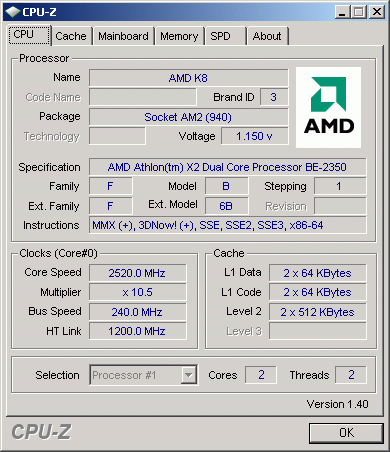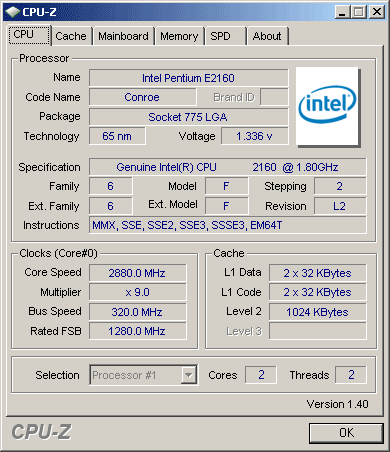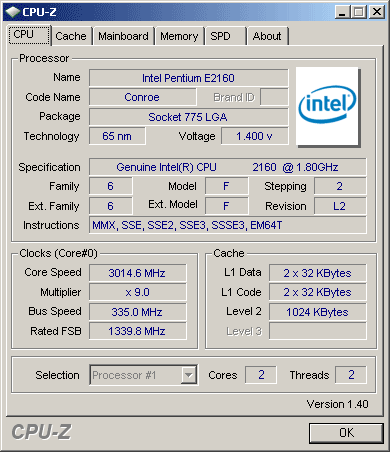AMD's Smart Strike: Athlon X2 BE-2350
Overclocking: Intel Beats AMD
AMD Athlon X2 BE-2350: The highest CPU speed we could run reliably was 2,520 MHz. One reason for this relatively low overclock might be platform limitations.
Scott Wasson over at the Tech Report was lucky with his BE-2350 sample, as he wrote he go it to be "relatively stable" at 3 GHz. Ours didn't want to run as fast; the sample maxed out at 2,520 MHz, and reducing the Hyper Transport speed didn't help either. We had already increased the voltage to 1.4375 V, and applying more reduced our maximum clock speed. Please note that CPU-Z doesn't identify the new processor correctly, which also applies to the voltage. Using an enthusiast-class motherboard could probably help achieving higher clock speeds, but would anyone buy a low-power budget processor to pair it with an expensive high-end motherboard? Probably not. Finally, going from 2.1 GHz to 2.5 GHz represents a 19% overclocking, which is an average result for a mainstream model.
The Intel processor was easily capable of surpassing this: we could reach 2.88 GHz easily by increasing the 200 MHz FSB800 system speed to 320 MHz (~ FSB1280). After increasing the Northbridge voltage from 1.55 V to 1.7 V (default is 1.2 V), we even reached a 3 GHz clock speed. Although we probably wouldn't want to run the highly overclocked system for a longer time, we would certainly go for 2.8 GHz. This equals a 55% overclocking when compared to the stock speed of 1.8 GHz, which is not bad at all!
Intel: 2.88 GHz was reliable, which we verified by running Prime95 for 15 minutes.
3,014 MHz was the maximum clock speed we could reach with our Pentium Dual Core E2160. However, the system wasn't entirely stable at this speed.
Get Tom's Hardware's best news and in-depth reviews, straight to your inbox.
Current page: Overclocking: Intel Beats AMD
Prev Page The Challenger: Intel Pentium Dual Core E2160 Next Page Platforms With Integrated Graphics
Patrick Schmid was the editor-in-chief for Tom's Hardware from 2005 to 2006. He wrote numerous articles on a wide range of hardware topics, including storage, CPUs, and system builds.


